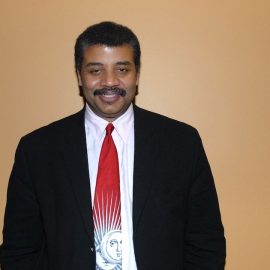

This article is an excerpt from the Shortform book guide to "A Brief History of Time" by Stephen Hawking. Shortform has the world's best summaries and analyses of books you should be reading.
Like this article? Sign up for a free trial here .
How much do you know about the universe you live in? What big questions of science does the book A Brief History of Time answer?
Thanks to scientific discoveries of the twentieth century, scientists have gained insight into many of nature’s secrets, from the origin of the universe to the nature of space and time. In his book A Brief History of Time, physicist Stephen Hawking explains these insights for a general audience.
Keep reading for a quick synopsis of A Brief History of Time by Stephen Hawking.
A Brief History of Time: Synopsis
In our guide to the book A Brief History of Time, we present Hawking’s exposition of modern physics through the lens of five big questions that the book answers: Is reality relative or absolute? Is the future predetermined? How did the universe begin? What is the nature of a black hole? And can you build a time machine? Where applicable, we also examine how Hawking’s assertions and predictions stack up to new data that scientists have collected since the book was published.
Question 1: Is Reality Relative or Absolute?
Science is founded on the assumption that reality works the same for everyone: If two scientists conduct exactly the same experiment, they should get the same results. Ironically, this principle has driven scientists to the conclusion that many things—including motion, position, time, and weight—are relative to the observer.
Motion Is Relative
Hawking explains that motion is relative to the observer, because there is no absolute reference frame.
Time Is Relative
In the same way that the motion of objects is relative to the observer, Hawking argues that different observers may measure time differently. Hawking explains that, in particular, time appears to slow down for entities that are moving very fast. This is because of the relationship between time, speed, and distance, and the fact that everyone who accurately measures the speed of light gets the same result. He notes that this is true regardless of their particular reference frame, because the laws of physics are consistent for all observers.
Relativity
When time progresses at a different rate for one person than another, scientists call this “time dilation.” As Hawking points out, Albert Einstein developed his theories of relativity as a mathematical model for predicting the motion of objects, even at speeds where time dilation becomes significant. (Earlier theories of motion didn’t account for time dilation.)
As Hawking recounts, Einstein introduced his theory of relativity in two phases: first, special relativity and then general relativity.
Mass Is Relative
Time is relative to speed (if you’re moving very fast, relative to someone else, you perceive less time passing than they do), and Einstein developed his theories of relativity to model this phenomenon. As Hawking explains, it turns out that the theories of relativity also imply that mass is relative to speed and time is relative to gravity. Specifically, Hawking explains that, as an object accelerates to speeds closer and closer to the speed of light, its mass increases, such that it can never actually reach the speed of light.
Question 2: Is the Future Predetermined?
Sscientific theories allow us to model the behavior of objects and predict their behavior. Hawking points out that if you could formulate a unified theory of physics and if you knew the exact state of the entire universe at any point in time, you could use that theory to predict the state of the universe at any other time.
This would make human free will an illusion, since you could calculate everyone’s future actions. Hawking refers to this as “scientific determinism.” However, he also identifies three limitations of scientific determinism:
- There is no unifying theory (yet).
- Quantum mechanics is not deterministic.
- Quantum uncertainty restricts measurements.
Question 3: How Did the Universe Begin?
Hawking points out that the origins of the universe have profound philosophical implications. He contrasts the Judeo-Christian belief that God created the universe at some point in the past with the atheistic view that many scientists held in the nineteenth century, namely that the universe was infinite and had always existed.
Evidence for the Big Bang
The primary piece of evidence that led to the development of the big bang was the discovery in the 1920s by astronomer Edwin Hubble that the universe is expanding. This was supported by both theory and observation.
In the 1960s, astronomers Arno Penzias and Robert Wilson were trying out a very sensitive microwave antenna when they discovered faint, uniform microwave radiation that seemed to come from every direction. This radiation was later dubbed the “cosmic microwave background,” and was exactly what theories predicted the big bang would have produced.
Implications of the Big Bang
Hawking had two concerns about the big bang, at least as it was modeled using general relativity.
His first concern was the fine-tuning problem. According to mathematical models, certain physical parameters of the early universe, such as its initial rate of expansion, had to be specified very precisely. If they had been even slightly different, the universe would not have developed in a way that could support human life. To Hawking, this indicated a problem, because it seemed to imply that human life was highly improbable, and yet we observe that human life exists.
His second concern was the singularity. Based on the equations of general relativity, the big bang started at a “singularity,” a point where matter, space, and time, are confined to an infinitely small space with infinitely high density. Hawking came to believe that they imply the theory of general relativity is incomplete, not that the universe actually did begin at a singularity.
Hawking suggests that a quantum theory of gravity would resolve both his concerns.
Question 4: What Is a Black Hole?
Hawking explains that a “black hole” is an object with such strong gravity that its gravity can trap light. And if light can’t escape from a black hole, then nothing can, since general relativity implies that nothing can travel faster than light. Hawking explains that most black holes form from collapsing stars. Normally pressure from nuclear fusion counterbalances a star’s gravity, but if a sufficiently massive star runs out of nuclear fuel, it can undergo runaway gravitational collapse, producing a black hole.
Hawking Radiation
Hawking predicts that there should be a net flow of antiphotons into a black hole and photons away from the black hole—meaning the black hole will have a faint glow. This glow is called “Hawking radiation.”
(Shortform note: There are at least two ways to explain Hawking radiation. In the book, Hawking describes this phenomenon in terms of particle-antiparticle pairs, but in his original scientific paper, he used an energy-density approach to calculate the radiation produced near a black hole. Some authors have criticized him for explaining it differently in his book than in the original paper because the quantum energy density approach provides additional insights. In particular, the quantum energy fields allow you to calculate the actual amount and distribution of radiation, and it turns out that Hawking radiation is produced not just on the surface of the event horizon, but in a region around the black hole about fifteen times the size of the event horizon.)
Question 5: Can You Build a Time Machine?
Hawking thinks it’s unlikely that you’ll ever be able to go back in time. He addresses the possibility of backwards time travel from three different angles: general relativity, quantum mechanics, and wormholes.
Time Travel via Speed
If you could travel faster than the speed of light, you would actually travel backwards in time. However, he also points out that, according to the theory of general relativity, nothing can travel faster than light, so nothing can go backwards in time.
Time Travel in Quantum Mechanics
Hawking asserts that, according to the theory of quantum mechanics, it is possible for microscopic particles to travel backwards through time. This is because, in quantum mechanics, a particle moving forward through space and time is mathematically equivalent to its corresponding antiparticle moving in the opposite direction through space and time.
(Shortform note: Hawking doesn’t discuss any practical methods of deliberately converting a particle into an antiparticle, much less intentionally sending a subatomic particle back in time. And the fact that you may be mathematically equivalent to a person made up of antimatter moving backwards through space and time doesn’t really give you a way to move backward in time. Thus, we infer that the practical applications of quantum time travel are quite limited.)
Time Travel via Wormholes
Hawking reports that, according to the theory of general relativity, it’s possible for a bridge to form between warped regions of spacetime, potentially creating an alternate pathway between points in time and space. These hypothetical pathways are called “wormholes.” According to Hawking, wormholes might be your best bet for traveling back in time, because, hypothetically, you could travel forward in time as you go through the wormhole, but arrive at a point in the past when you come out the other end. However, he cautions that this possibility is still quite remote, for two reasons:
- Hawking asserts that wormholes are extremely unstable. If any mass (such as a person or a vehicle) entered the wormhole, its gravity would affect the curvature of spacetime enough to cause the wormhole to collapse.
- Hawking explains that wormholes require spacetime to have concave curvature. The presence of a massive body causes convex curvature of space, resulting in gravity, but scientists have never observed concave curvature of space. So, in practice, it may not be possible to create a wormhole in the first place.

———End of Preview———
Like what you just read? Read the rest of the world's best book summary and analysis of Stephen Hawking's "A Brief History of Time" at Shortform .
Here's what you'll find in our full A Brief History of Time summary :
- The search for a theory that explains the history and evolution of our universe
- Stephen Hawking's discussions about time, space, dimensions, and quantum theory
- How time travel would theoretically work






